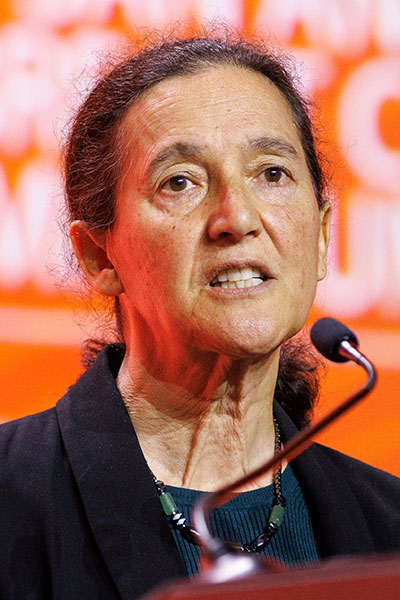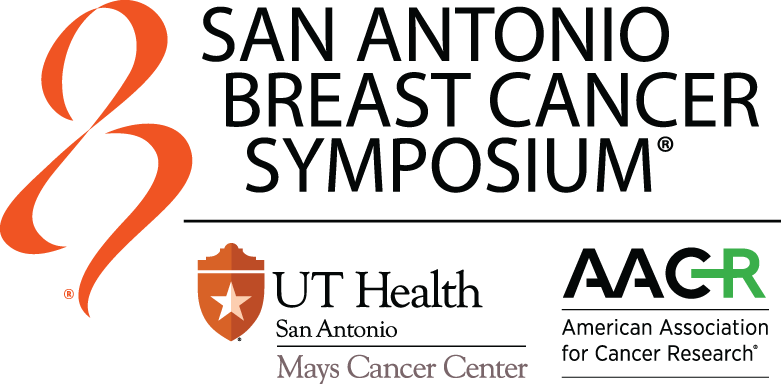
Adjuvant endocrine therapy for premenopausal ER-positive breast cancer had a relatively challenging initial pathway. As knowledge of this clinical subtype has expanded, so has the ability to understand ways to optimize treatment for individual patients.
Prudence Francis, MD, Head of Medical Oncology, Breast Service, at Peter MacCallum Cancer Centre in Australia, addressed what oncologists and researchers have learned and how that knowledge can translate into treatment in the future in Plenary Lecture 2: Premenopausal ER+ Breast Cancer: Past, Present, and Future.
Dr. Francis took a look back at early trials in 1992 that tested adjuvant ovarian ablation in premenopausal breast cancer patients younger than 50. In those trials, adjuvant ovarian ablation compared to a control showed a significant improvement in recurrence free survival and overall survival, with a larger absolute benefit in those with node positive or node negative disease.
She moved ahead to 2005 with a similar trial that added reversible ovarian suppression in women under 50, and it showed less of a difference in recurrence and mortality between the test group and the controls, which she attributed to more patients by that time receiving chemotherapy along with ovarian suppression or ablation.
“So, we’re getting these early hints of the interaction between chemotherapy and ER-positive breast cancer and ovarian suppression,” she said.
Relevant early observations from trials studying premenopausal ER-positive early breast cancer were that women younger than 35 with ER-positive tumors had a higher risk of relapse than older premenopausal women with ER-positive tumors; women who develop amenorrhea after chemotherapy had a lower risk of relapse than those with continued menses; and likelihood of chemotherapy-induced amenorrhea increases with older premenopausal age.
Fertility is an important consideration in premenopausal women, Dr. Francis said. She recommends fertility consultation, use of non-hormonal birth control, and starting gonadotropin-releasing hormone agonists (GnRHa) at least one week before chemotherapy.
She reviewed the Suppression of Ovarian Function Trial (SOFT) and its most recent data. It was conducted in premenopausal, HR-positive breast cancer, with three treatment arms: tamoxifen for 5 years; tamoxifen and ovarian function suppression (OFS) for 5 years; and an aromatase inhibitor plus OFS for 5 years.
In SOFT, Dr. Francis asked, do women under age 35 need OFS? The study found meaningful overall survival improvement with OFS at 12 years; 1 in 3 patients died if assigned tamoxifen alone without OFS.
Presently, non-adherence to adjuvant endocrine therapy is common in younger patients, and side effects are often a cause. Bone density also needs to be monitored, and patients can benefit from bisphosphonate to reduce treatment-induced bone loss and metastasis risk.
Dr. Francis shared details from the ASTRRA trial, conducted by colleagues in Korea, which had results consistent with results in the SOFT prior-chemo cohort. She also shared the link to the Composite Risk Application created by colleague Meredith Regan, ScD, Harvard Medical School, which assists in tailoring premenopausal adjuvant endocrine therapy.
The Pregnancy Outcome and Safety of Interrupting Therapy for women with endocrine responsive breast cancer, or POSITIVE trial, is working toward answering questions about adjuvant endocrine therapy for patients in the future, she said. That trial will be discussed more in depth during SABCS General Session 4 on Friday, December 9.
Dr. Francis also discussed novel endocrine options including oral GnRH antagonists and oral SERDs to complement existing endocrine therapy. Questions also remain about when optimal adjuvant endocrine therapy can replace adjuvant chemotherapy in premenopausal ER-positive HER2-negative breast cancer.
On-Demand Session Availability
Daily sessions will be available for on-demand viewing 3-5 days following the 2022 Symposium (author permitting). They will be available exclusively to registered SABCS attendees until March 2023. Following March 2023, they will be available on SABCS.org under the “Resources” tab.

